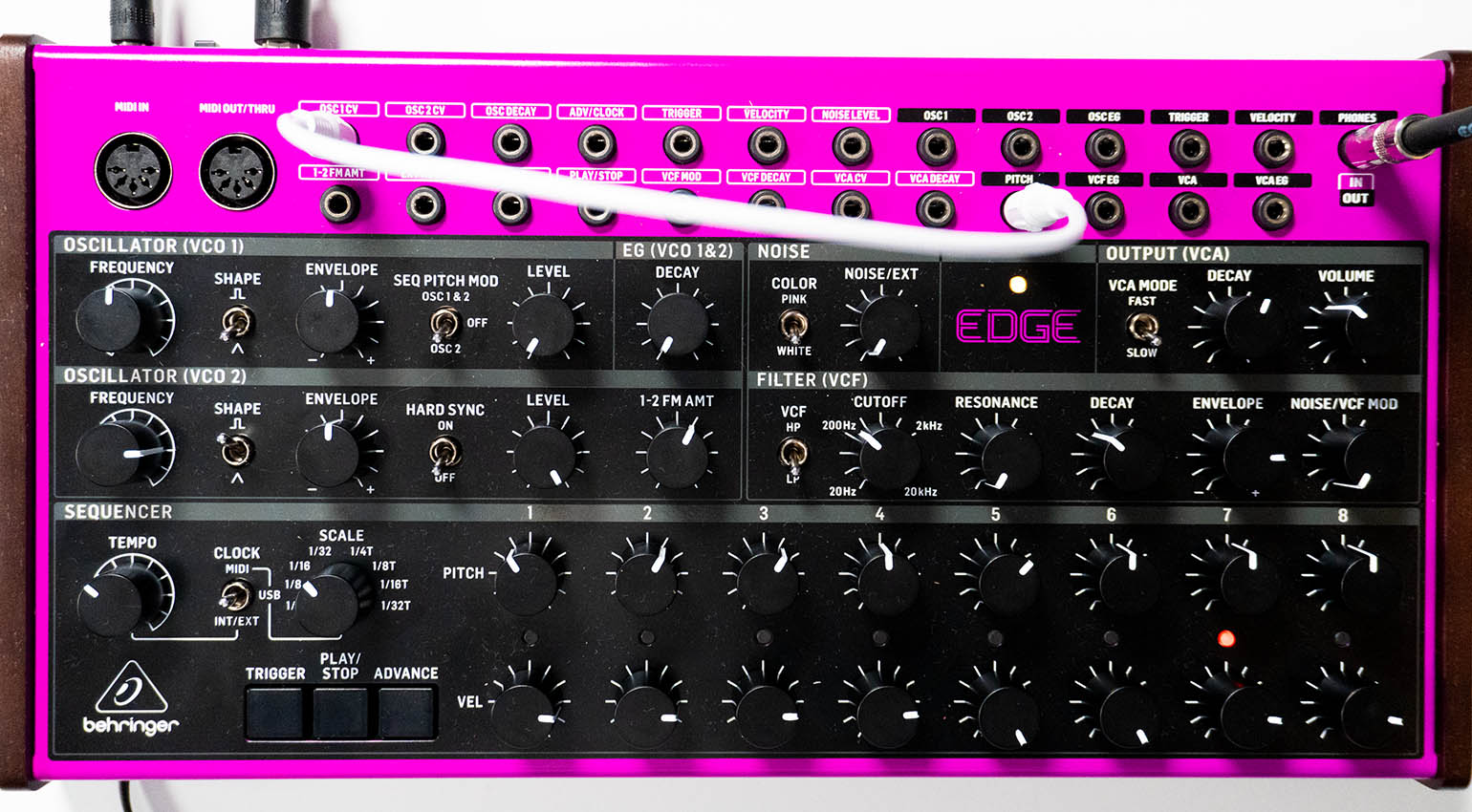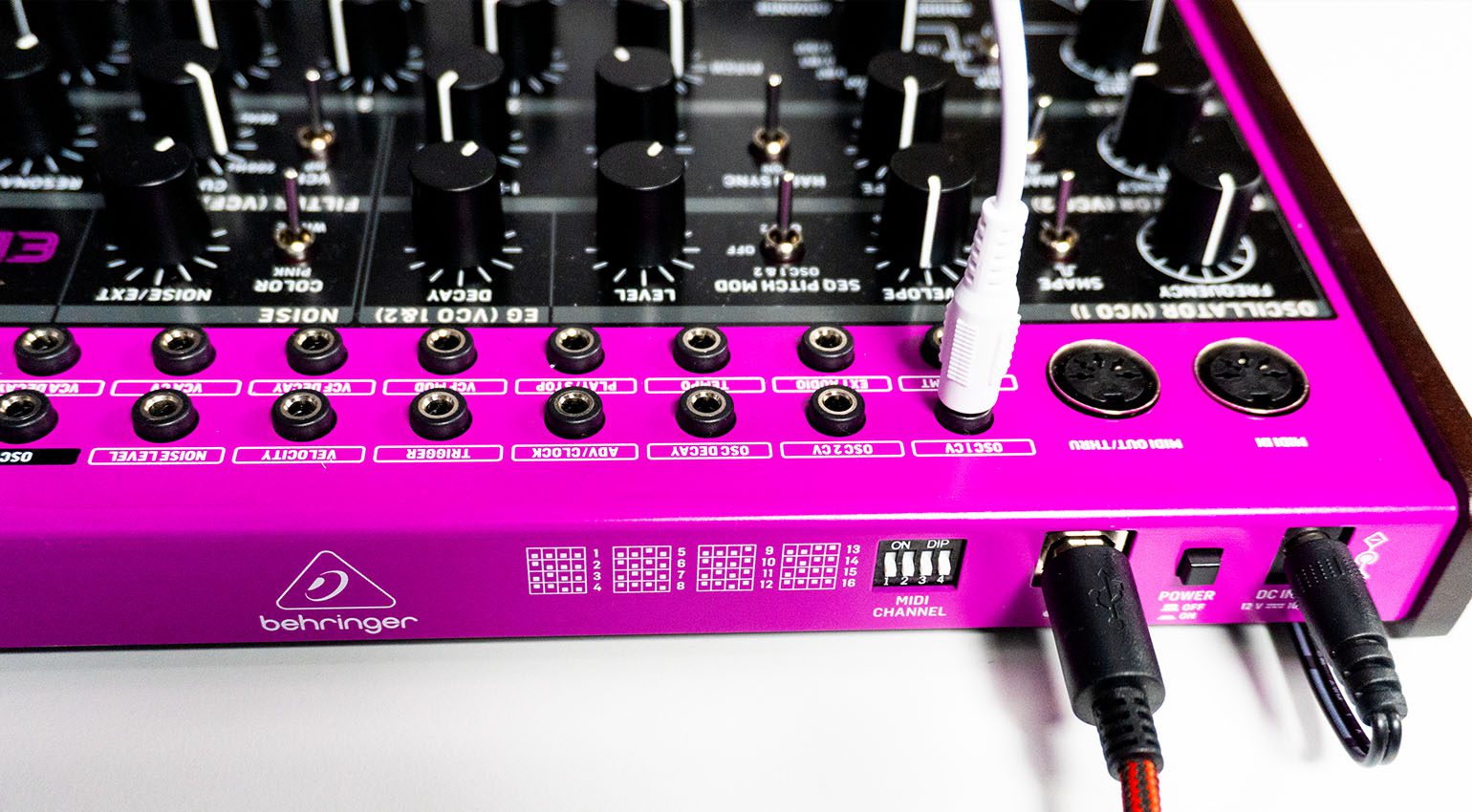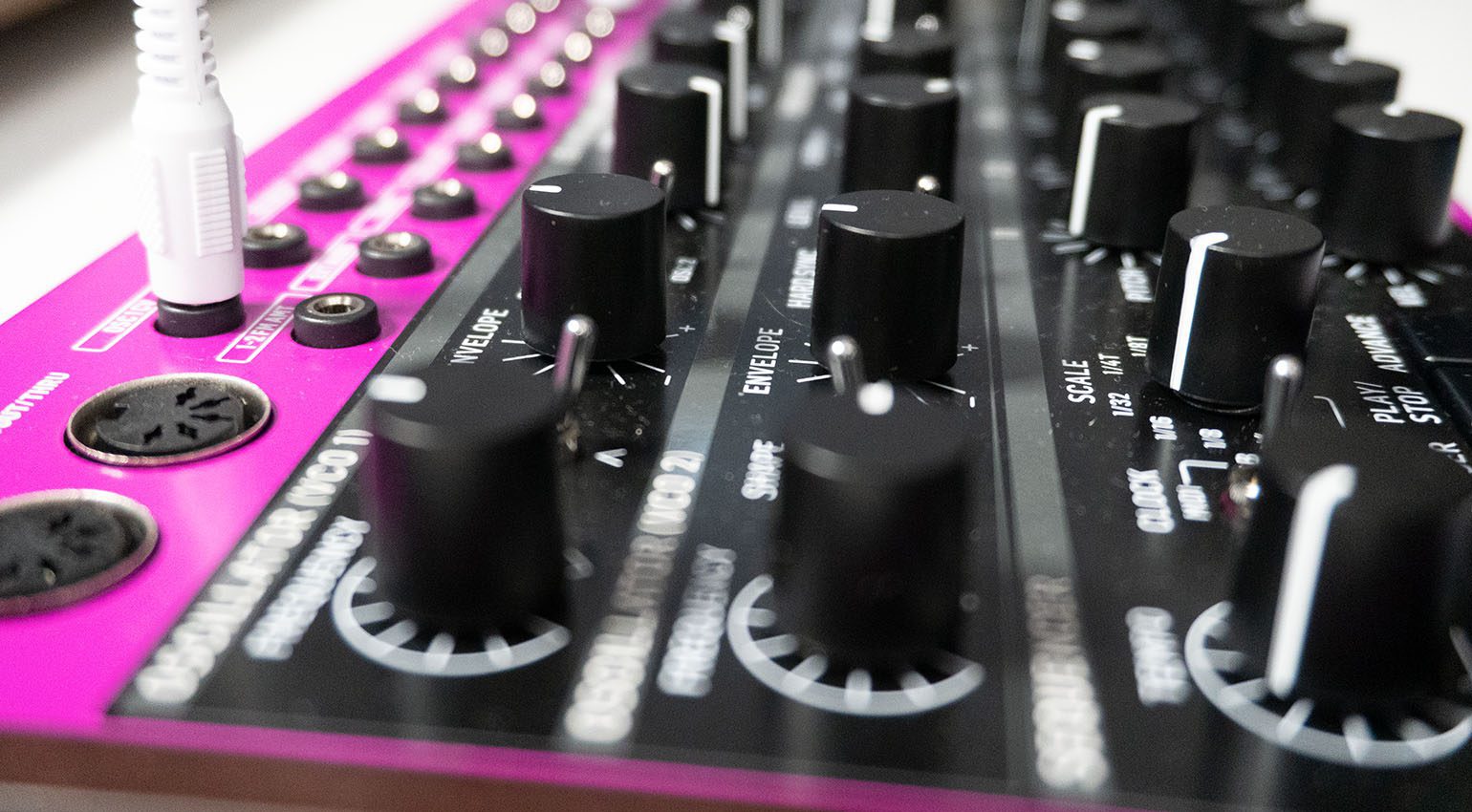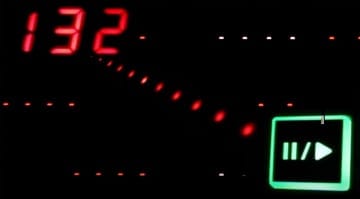First Look: Behringer Edge – Analogue Groove Machine
Behringer Edge is finally here! The manufacturer announced the groove synthesizer a while ago, and it took a moment to get here. What is Behringer modeling this time? In terms of functions and workflow, this synth is clearly leaning on Moog’s DFAM. There is going to be some debate about Edge’s choice of color, but it does catch the eye in the studio and on stage. We had the opportunity to get our hands on a preview unit. Besides a thorough review, we did some A/B’ing against the DFAM to hear how close Behringer got.
This first look was originally published in German on Gearnews.de by Marcus Schmahl.
Behringer Edge – The highlights
- simple sequencer for percussion patterns and drum grooves,
- light and compact
- less expensive than DFAM
- integrated MIDI-port / USB
- patch bay
- controls for every parameter, perfect for live performance
Behringer EDGE – What’s the fuzz all about?
Behringer Edge was first introduced back in 2021. It was even open for pre-orders. Unfortunately, that was a time of extreme shortages of many components crucial for synths like the Edge. So Behringer pushed the release date indefinitely. But now, it’s pink time! You can finally order it. It’s still a limited run on a first-come, first-served basis. One more reason to put the Edge through its paces and get a feel for its strengths and weaknesses in the studio. Since I also own and love a DFAM from Moog, a synth the Edge closely draws inspiration from, I was quite excited to see and hear how close the two resemble.
Can Behringer Edge replace my DFAM? That would be quite the statement given the pretty steep difference in price. The pre-release unit I got to test did not have the final firmware installed, however. So there might be slight differences in sound and functionality to the units you’re getting these days. On to the hands-on.
Unboxing the Edge
In terms of I/O, Behringer Edge includes a USB port for firmware updates and USB-MIDI in and out. Next to the port sits a DIP switch to set and change the Edge’s MIDI channel, a power switch, and the port for connecting the external power supply. In the upper left corner of the top panel, there is a mini-jack stereo output to connect headphones, which co-exists as the main out. In the upper right corner of the top panel, you get two DIN ports for MIDI in and out.
Next to the two MIDI ports of the Behringer Edge, you get an extensive patch bay, with 15 inputs (white) and 9 outputs (black) for patching internal and external CV signals. Here, you can send and patch signals from OSC1, OSC2, OSC EG, Trigger, Velocity, Pitch, VCF EG, VCA, and VCA EG. In addition, OSC1 CV, OSC2 CV, OSC Decay, ADV/Clock, Trigger, Velocity, Noise Level, 1-2 FM AMT, Ext Audio, Tempo, Play/Stop, VCF Mod, VCF Decay, VCA CV, and VCA Decay can be modulated from here.
Underneath the patch bay, you get 16 smoothly turning encoders and 7 switches to control the synth. Then there are an additional 18 encoders, three buttons, and a switch for setting up the sequencer. Most of the encoders, buttons, and switches are placed ergonomically enough that you can get patching even with bigger hands and clumsy fingers. The general layout of the Edge’s panel is quite logical, and it follows the signal flow.
Edge’s Sound
In the upper left corner, right underneath the two MIDI ports, you find controls for the two oscillators of the Behringer Edge. On oscillator 1, there are controls for its frequency, the waveforms’ shape (square, saw), envelope, Seq Pitch Mod (1&2, Off, Osc2), and level. It’s almost the same affair with oscillator 2, but you get an additional encoder for 1-2 FM AMT for all matters FM and a switch for hard-sync. Behringer Edge’s decay setting is global and affects both oscillators. On to the adjustable noise generator (pink, white) and the filter section (highpass, lowpass) with controls for Cutoff (20 – 20,000 Hertz), Resonance, Decay, Envelope, and Noise/VCF Mod. In the upper right corner underneath the headphone out, there are controls for setting output volume, VCA Decay, and VCA Mode (fast or slow).
The synth’s sound packs quite the punch, with a tendency to sound a bit harsh. That way, it can cut through a dense mix, but if you tweak it right, the Edge can also groove and flow much more relaxed. The added possibility to change the sound’s timbre by changing the noise generator’s character is a sonic dimension the DFAM actually lacks.
The Sequence
The sequencer section starts with controls for speed and scale from quarter notes to 32nd triplets. If you use the Behringer Edge in conjunction with other gear, you can also sync it through CV clock, MIDI clock via DIN cable, or USB. Underneath the two controls, you get a trigger button to play notes, Play/Stop for initiating or halting the sequence, and Advance to move to the next step in your sequence.
Now the fun begins! There are eight encoders each for setting pitch and velocity for each of the eight steps in a sequence. Depending on how high you set the decay, you can even create note slides. And a little LED indicator shows you what step is currently playing.
Designing sounds with Behringer Edge
One of the major advantages of such a compact desktop synth is its immediacy. You build up a sequence in real-time and change and adapt the settings during the recording process to add movement and character. I was baffled again and again by how fast I was creating new grooves and sequences with the pink synth. Machines like this can be a real lifesaver when you’re in a creative rut.
Behringer Edge’s workflow is simple enough to quickly get the idea out of your head into the machine just as much as creating an endless stream of musical randomness. Isn’t that just what you need for your electronic instrument collection?
Conclusion and Comparison
The video comparison between Behringer Edge and Moog DFAM is by no means meant to be a complete shoot-out. It is more meant to be a juxtaposition between the two to illustrate the differences. Both Edge and DFAM react and sound quite differently with similar settings, in my opinion. Which is a plus for both. Of course, the Edge wins on the price aspect. You get quite a lot for your money. And it’s a lot of fun. If you want to control DFAM via MIDI you also need additional hardware (meaning additional expenses). But I can also trigger individual steps by way of the module Sonolast MAFD, which is something I did not find as a possibility with the Edge.
Generally speaking, the DFAM’s sound is a bit rounder and warmer, but Behringer Edge cuts through the mix better. In the end, it’s up to you and your ears which sound you prefer. For being on the road and on stage, I’d recommend the Edge due to its more compact form and the USB port on the back. And given the little box’s looks, I would bet that we soon will see it on a lot of stages.
Price and Specifications
You can order Behringer Edge at Thomann* (Affiliate) for 235 Euros.

Besides the synth, you get an external power supply, a couple of mini-jack patch cables, and the manual in the packages. Through the software Synthtribe (just search for the app in the search box), you can install firmware updates, change a couple of settings and even create sequences on your computer. Synth tribe can be downloaded on Behringer’s website.
If you’re more on the Moog side of things, you can get the Moog DFAM at Thomann* (Affiliate) for 689,- Euros.


More on Behringer and Desktop Synths
- More on Behringer
- Synthtribe download at Behringer
- Product Website
- More on desktop synths
Pros and Cons Edge from Behringer
Pros
- easy-to-use sequencer for percussion patterns and drum grooves
- light and compact
- price
- integrated MIDI/USB port
- patch bay
- controls for every parameter, perfect for live jams
- cuts through the mix
Cons
- sound is a bit more mellow and cool (compared to Moog DFAM)
Videos about Behringer Edge
*This post contains affiliate links and/or widgets. When you buy a product via our affiliate partner, we receive a small commission that helps support what we do. Don’t worry, you pay the same price. Thanks for your support!
- First Look Behringer Edge: Marcus Schmahl
- USB port, DIP switch, and power supply: Marcus Schmahl
- Behringer Edge's encoders are nice to work with: Marcus Schmahl
- Pretty in pink!: Marcus Schmahl
- Edge and DFAM: Marcus Schmahl
5 responses to “First Look: Behringer Edge – Analogue Groove Machine”

 4,5 / 5,0 |
4,5 / 5,0 | 















I’m on the EDGE of my seat.
This makes me upset with Moog. I love the DFAM but all they’ve done in the past 6 years since it’s release is raised the price to a staggering $699. What they could have done is make an MK2 that builds upon how awesome DFAM is. Behringer has taken the initial spirit of the DFAM and expanded upon it at less than half the cost. There is no reason Moog couldn’t do this. The Moog DFAM has so much potential for a rev 2 – sequencer scale, length, midi, groove/swing, (pitch) quantization, digital clock for bpm, etc.
Sounds very good and and at a great price!
I’ll buy it when they make it in any other colour but that one!
Would be cool to sync up a DFAM and EDGE and have them modulate each other. Many possibilities!